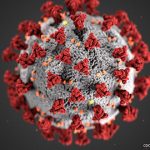As of Jan. 1, rheumatology practices face significant changes regarding coding and reimbursement for telemedicine services. These include new and deleted codes in the American Medical Association (AMA) Current Procedural Terminology (CPT), updated Medicare policies and the looming expiration of temporary pandemic-related flexibilities.
The AMA has stated that the new CPT codes were created to reflect emerging healthcare needs, including services for mental health, remote patient monitoring and audio-only telemedicine visits for new and established patients. Understanding the nuances of telemedicine coding for 2025 is important to ensure compliance with CPT guidelines and prompt payment.
New & Deleted Telemedicine Codes for CY 2025
The 2025 CPT manual includes 17 new codes for audio-visual and audio-only telemedicine visits for new patients (98008–98011) and established patients (98012–98015). The newly created codes appear to expand upon the significant changes to medical decision making (MDM) and total time introduced in the revised evaluation and management (E/M) services; the time thresholds are important elements for determining which codes to report.
However, the Centers for Medicare & Medicaid Services (CMS) declined to recognize 16 of these new codes for audio-visual and audio-only telehealth, citing statutory limitations that require them to continue using the existing E/M codes for these services.
Keep in mind that commercial, self-funded and Medicare Advantage (MA) policies regarding telehealth vary, so providers and their staff should verify the most recent policies with individual plans. Similarly, because Medicaid policies are established at the state level, providers should check the local Medicaid agency and/or Medicaid Managed Care Organizations for their policies.
The key updates include:
- Beginning Jan. 1, CPT codes 99441–99443 are no longer available.
- Modifiers 93 and 95, indicating the service was provided via audio-only or audio-visual technologies, are no longer required (except for Medicare claims). The new code descriptors identify how the service was performed to streamline the coding process, eliminating the need for modifiers.
CPT codes 98000–98007 are for synchronous audio-video telemedicine visits and require a medically appropriate history and/or examination:
For new patients:
- 98000: requires straightforward medical decision-making or 15-29 minutes
- 98001: requires low medical decision-making or 30-44 minutes
- 98002: requires moderate medical decision-making or 45-59 minutes
- 98003: requires high medical decision-making or 60-74 minutes
- 75+ minutes or longer, use prolonged services code 99417 (non-Medicare) or G2212 (Medicare)
For established patients:
- 98004: requires straightforward medical decision-making or 10-19 minutes
- 98005: requires low medical decision-making or 20-29 minutes
- 98006: requires moderate medical decision-making or 30-39 minutes
- 98007: requires high medical decision-making or 40-54 minutes



